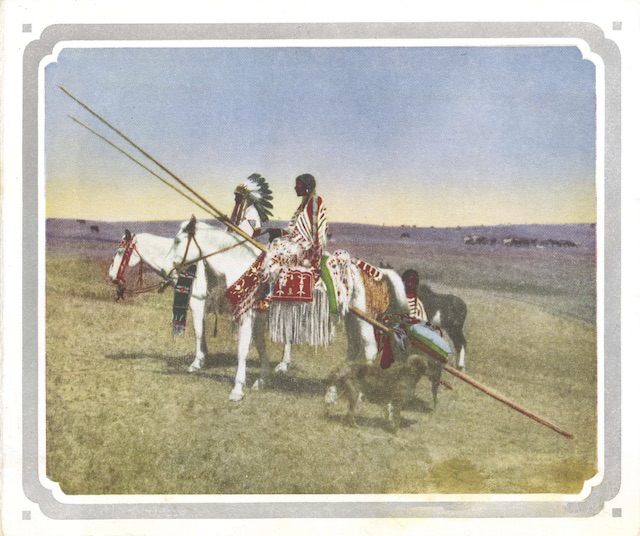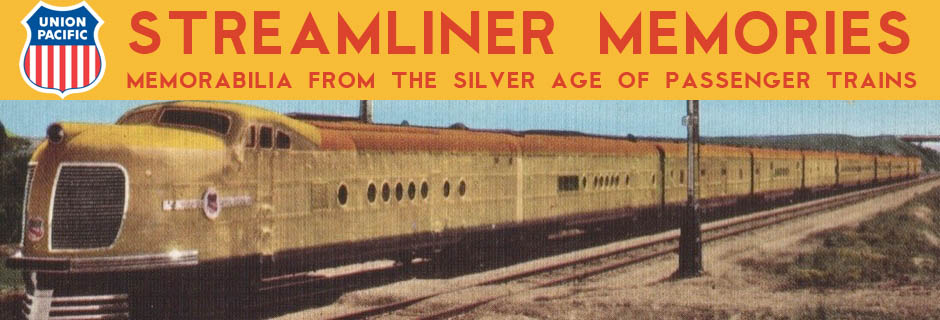The back of this menu has a lengthy description of the cover photo written by Chief Buffalo Child Long Lance, who claimed to be a full-blooded Blackfoot Indian chief. In fact, as noted for a previous Canadian Pacific menu, he was actually born in North Carolina and probably was at least partly African-American. While he may have had some Cherokee ancestry, he was not a Blackfoot.

Click image to download a 1.7-MB PDF of this menu.
At the time, both people in both Canada and the U.S. were less likely to be victims of racial prejudice if they claimed to be descended from Indians rather than African-Americans. When Long Lance’s deception was revealed in 1929, for example, one writer, who wasn’t himself prejudiced against blacks, wrote with tongue in cheek, “We’re so ashamed! We entertained a n****r.”
Whatever his ancestry, Long Lance had lived with the Blackfoot for several years and his descriptions of their culture were fairly accurate. According to him, “Cayuse” was one of the Blackfoot words for horses because they indirectly acquired their first horses from Oregon’s Cayuse Indians. Travois, of course, were the poles dragged behind the horses to carry baggage.
The menu itself is for the “mid-day” meal, and is entirely a la carte. Entrées included whitefish or trout, salmon, chicken & ham pie, bacon omelet, oxtails, chicken, steaks, lamb chops, and various egg dishes. While there is no date on the menu, it is clearly of a similar vintage to the other menu that quoted Buffalo Child Long Lance, which was dated 1925. Based on that, multiply prices by 14 to get today’s Canadian dollars and by 10.5 to get today’s U.S. dollars.
